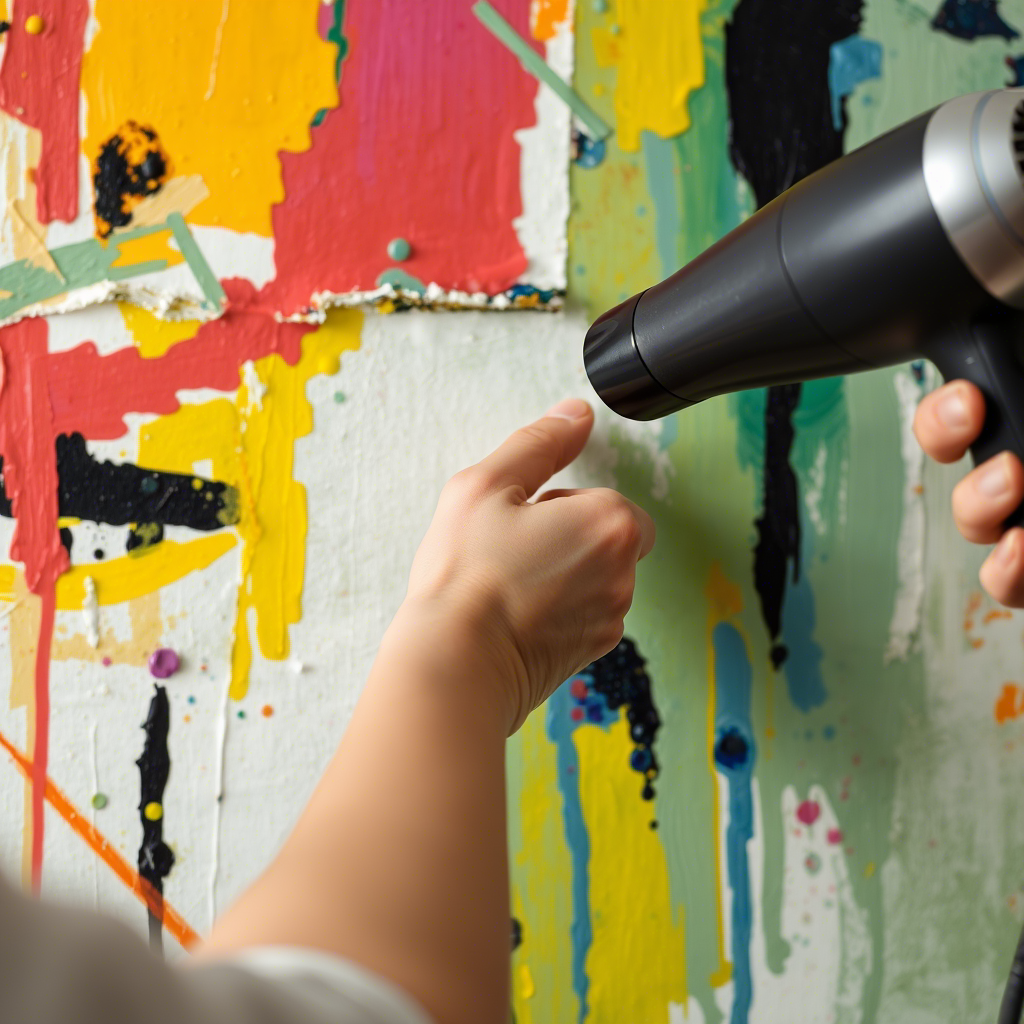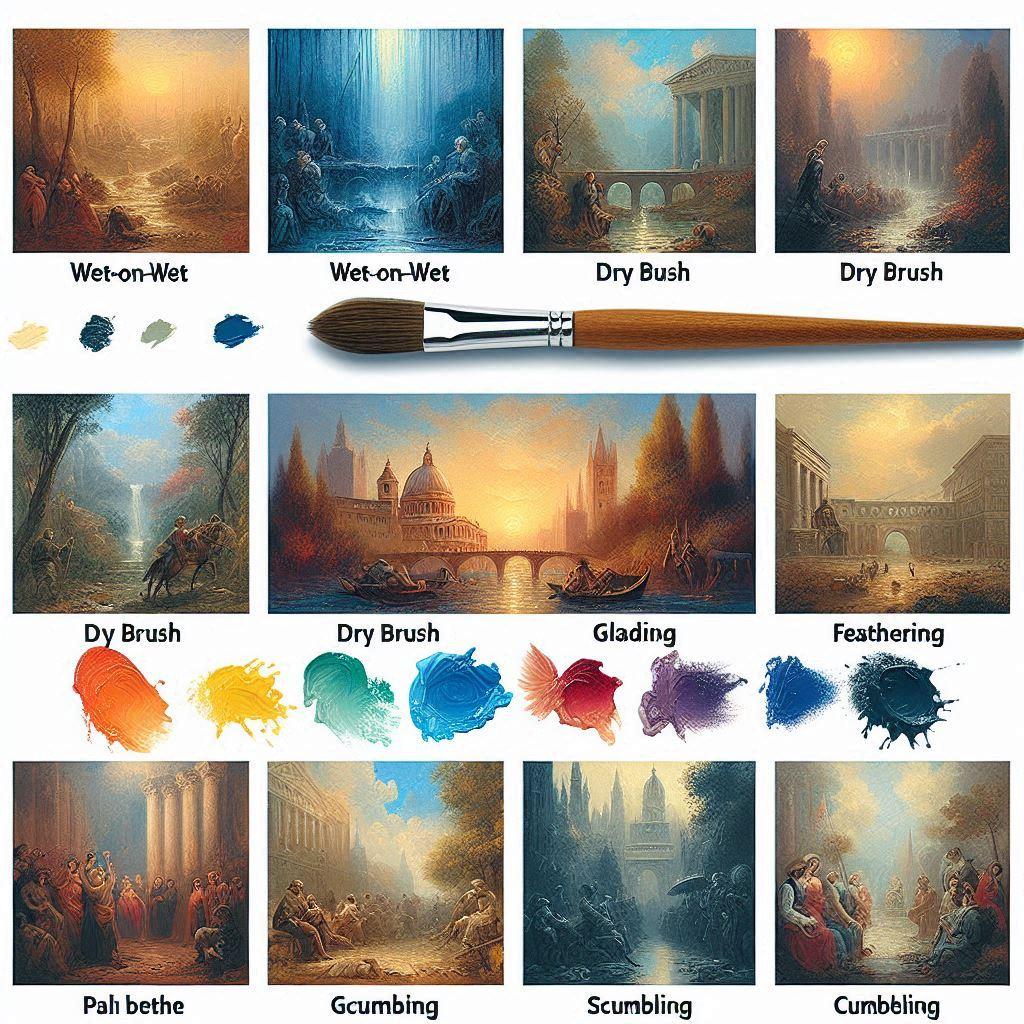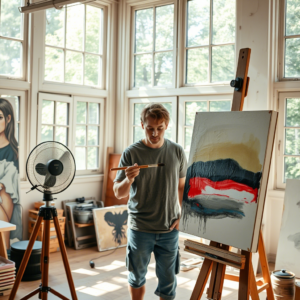
Have you ever been eager to add the next layer to your artwork, only to be held back by slow-drying paint? The creative process is thrilling, but waiting for paint to dry can test anyone’s patience. Whether you’re eager to add another layer, apply details, or simply admire your work, slow-drying paint can be frustrating. The good news? You don’t have to sit idly by while it sets. This guide will show you how to make paint dry faster with practical, easy-to-follow tips that work for all types of artistic projects.
Key Point Summary:
- Understand what happens when paint dries and how different types behave.
- Explore factors like temperature and humidity that influence drying time.
- Learn hands-on methods to speed up the process using tools and techniques.
- Get tailored advice for tricky situations, like painting on different surfaces or using thick layers.
Understanding Paint Drying
To speed up paint drying, it helps to know what’s happening on that freshly painted canvas. Paint doesn’t just sit there looking pretty—it undergoes a transformation from wet to dry, and the process depends on the type of paint you’re using.
Drying vs. Curing: What’s the Difference?
You might hear “drying” and “curing” used interchangeably, but they refer to different stages:
- Drying: This is when the paint feels dry to the touch as its solvents—like water or oil—evaporate. It’s the stage you’re most concerned with for quick results.
- Curing: This is when the paint fully hardens through chemical reactions, gaining its durability and longevity. This process can take days or weeks, even after the surface feels dry.
Focusing on drying is key to continuing your artwork sooner, though curing still matters for long-term preservation, as it ensures the paint fully bonds to the surface, preventing cracking, fading, or deterioration over time.
Paint Types and Their Drying Times
Not all paints dry at the same speed. Here’s a rundown of the main types used in art:
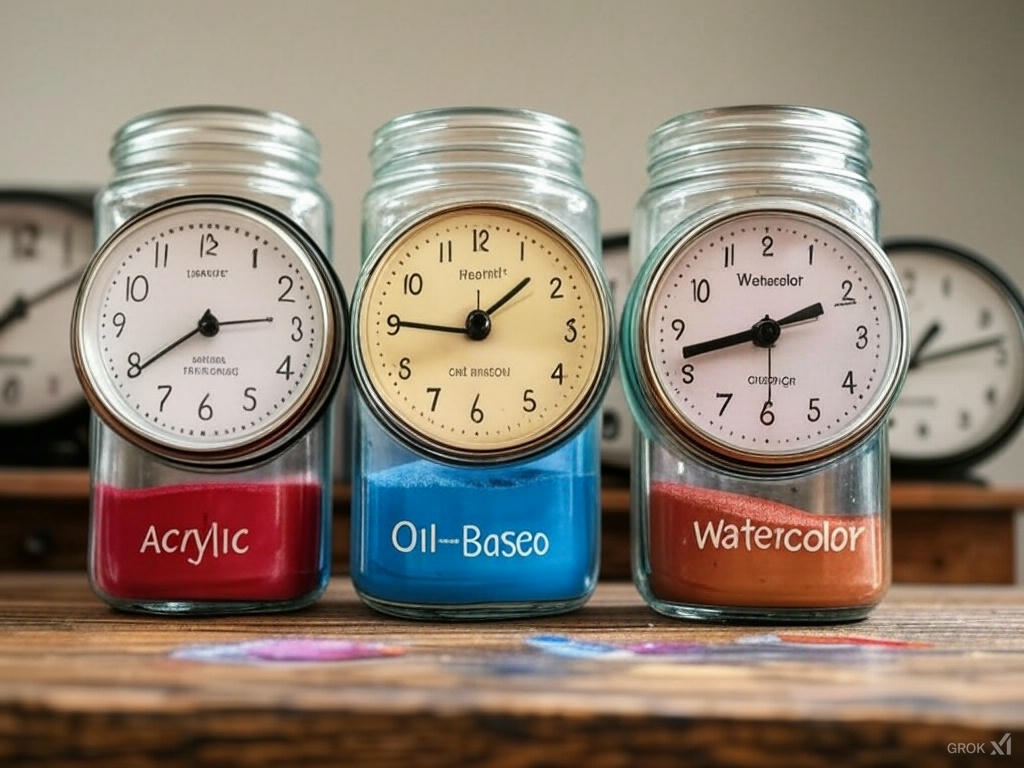
| Paint Type | Touch-Dry Time | Recoat Time | Full Cure Time |
|---|---|---|---|
| Acrylic | 30 min – 1 hour | 2 hours | 1-2 weeks |
| Oil-Based | 6-8 hours | 24 hours | 3-7 days |
| Watercolor | 5-15 minutes | N/A | 1-2 days |
Note: Times vary depending on conditions like temperature and airflow.
Factors Affecting Drying Time
Drying isn’t just about the paint itself—your environment and approach play a huge role. Let’s break down the key factors that can slow or speed up the drying process.
Temperature
Warmth helps paint dry faster. Higher temperatures boost evaporation, cutting down wait time. Aim for a range of 50°F to 85°F (10°C to 29°C) for best results. If it’s too hot—above 90°F—you risk cracks or uneven finishes.
Humidity
Moisture in the air can slow drying, especially for water-based paints like acrylics and watercolors. Keep humidity below 50% if possible to speed up evaporation.
Ventilation
Good airflow removes evaporated solvents, helping paint dry faster. Stuffy studios slow down the process.
Surface Type
What you’re painting on matters. Porous surfaces like canvas or paper absorb moisture, often speeding up drying. Non-porous surfaces like glass or metal hold onto wet paint longer.
Practical Methods to Speed Up Drying
Ready to take action? Here are five proven ways to get your paint drying quicker, with tips you can start using today.
Increase Airflow
Increasing airflow helps paint dry faster by removing moisture and solvent vapors from the surface, allowing the paint to set more quickly. Boosting air movement is a simple, effective trick:
- Fans: Set up a fan to blow air across—not directly at—the painting to avoid unwanted texture.
- Open Windows and Doors: Create a cross-breeze for natural ventilation.
Apply Heat
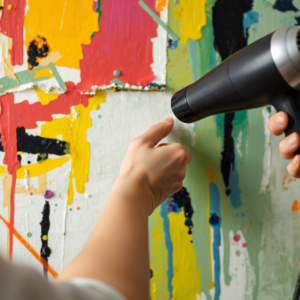
A little warmth can go a long way, but don’t overdo it:
- Space Heaters: Raise the room’s temperature safely – keep them at a distance.
- Hairdryers: Perfect for small sections; use a low setting and keep moving.
- Heat Guns: More intense, so use sparingly and avoid scorching the paint.
Lower Humidity
If the air is too damp, try these methods:
- Dehumidifiers: Remove excess moisture from the room.
- Timing: Avoid painting on especially humid days.
Use Thin Layers
Less is more when it comes to fast drying:
- Multiple Coats: Apply two or three light layers instead of one thick one.
- Even Application: Use a quality brush or palette knife for smooth, thin coverage.
Choose Quick-Drying Paints
Some paints naturally dry faster:
- Acrylics and Watercolors: These water-based options dry quickly.
- Fast-Dry Oil Paints: Some brands offer special quick-drying formulas.
Follow the paint’s instructions for the best results.
Tips for Specific Scenarios
Every artwork has its challenges. Here’s how to manage drying times in different situations.
Painting in High Humidity
If moisture in the air is slowing your drying time:
- Use a dehumidifier or air conditioner to control humidity.
- Improve airflow with fans or open windows.
- Choose fast-drying acrylics instead of slow-drying oils.
Painting on Canvas
Canvas absorbs paint, which can speed up or slow drying depending on the medium:
- Prime your canvas with gesso to regulate absorption.
- Apply thin layers to prevent pooling.
- Use a fan to encourage drying without disturbing the texture.
Painting on Paper
Paper dries quickly, but you can speed it up further:
- Use absorbent paper like cold-press watercolor paper, which has more texture and absorbs water more quickly, helping paint dry faster than smooth, hot-press paper.
- Blot excess water gently with a tissue for watercolor paintings.
- Use a hairdryer on a low setting for controlled drying.
Painting on Non-Porous Surfaces (Glass, Metal, Plastic)
These surfaces hold moisture longer, so:
- Use thin layers to reduce drying time.
- Work in a well-ventilated space to aid evaporation.
- Apply heat carefully to avoid overheating the surface.
Conclusion
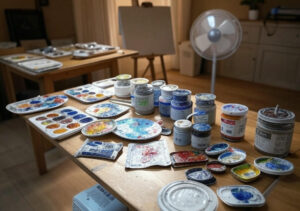
Getting paint to dry faster doesn’t have to be a mystery. To speed up the process, focus on key techniques like increasing airflow with fans or open windows, applying heat with a hairdryer or space heater, lowering humidity with a dehumidifier, using thin layers instead of thick applications, and choosing fast-drying paints like acrylics. Adjust your approach based on your painting surface, and you’ll be able to continue creating without long drying delays. By understanding how drying works, tweaking factors like temperature and airflow, and using smart techniques—like thin coats or a trusty fan—you can reduce your wait time. Adjust your approach based on the surface and medium, and you’ll be enjoying your finished artwork much sooner.
Try these techniques on your next painting and see how much time you save!

